HERE IS THE LATEST NEWS ABOUT OUR CAPABILITIES, SATISFIED CLIENTS, AND ACHIEVEMENTS.
2024
Christmas in July BACK TO TOP
Designing the Perfect Holiday Card
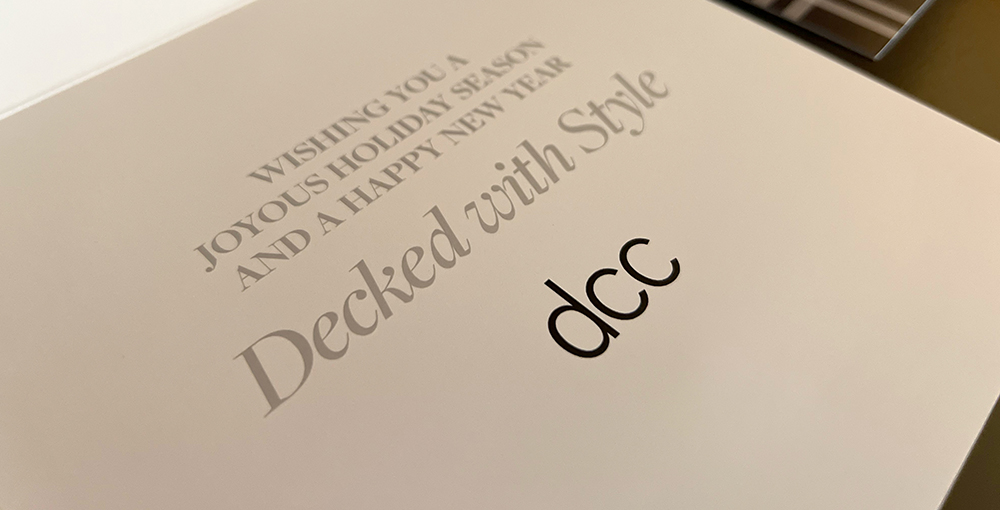
With the current soaring temperatures, your focus may be on summer activities, and the upcoming holiday season is not likely top of mind, but now is the perfect time to start planning your holiday card. While it may seem early, thoughtful preparation allows you time to craft a thoughtful card and message that resonates with your company’s values and coordinate printing and distribution seamlessly. Designing and sending out a company holiday card can be a wonderful way to connect with clients, partners, and employees during the festive season. Starting early allows for a stress-free process and ensures your holiday greetings arrive in time to spread plenty of cheer.
Planning
Planning ahead of the holiday rush will give you ample time to carefully curate your greeting. Start by determining why, when, how, and to whom you will be sending your card. Is the purpose of your holiday card to thank clients for their business this year, build new relationships, or just wish everyone a happy holiday season? Set your budget up front, along with a deadline for sending them out. Compile your list of clients and employees to determine how many you will send, and ensure you have accurate contact information. Lastly, brainstorm and select a theme that aligns with your company’s values, reflects your culture, and will resonate with your recipients.
Designing
Then, it’s time to conceptualize a design and draft a sincere message. Your message should be heartfelt and convey gratitude and holiday cheer, while your design should reflect your theme and be consistent with your brand. Consider incorporating your logo, brand colors, and brand fonts for a cohesive look. There are countless options for creating a unique and festive greeting, from specialty papers and metallic inks to custom boxes and more that you will want to consider during your design phase. Some things to consider:
- Materials - Opt for high-quality paper stocks, metallic foils, letterpress or embossing techniques, holographic or metallicized papers such as Unifoil’s Unilustre®, and specialty inks for a high-end, premium feel that is sure to stand out.
- Custom Illustrations - Custom illustrations can help capture the holiday spirit in a fun and unique way.
- Unique Elements - Incorporate elements like pop-ups, sliders, die-cuts, and lamination into your design, or design a card that doubles as something useful, such as an ornament or bookmark, to add value and help your card stand out.
- Sustainability - Showcase your commitment to sustainability through your design and messaging by using eco-friendly materials and setting new goals for the new year.
- Giving Back - The holidays are a great time to partner with charitable organizations and give back to your local community. Highlight your charitable efforts in your holiday card to help get recipients in the spirit of giving.
- Digital Elements - To make your card memorable and engaging, incorporate augmented reality (AR) features or QR codes that link to exclusive holiday content.
- Diversity - Create a design that incorporates and celebrates a variety of cultural holidays and traditions to ensure inclusivity.
- Packaging - Consider unique packaging options like custom envelopes or boxes that complement the card design and enhance the unboxing experience.
Printing
A professional printing company like DCC can help bring your holiday card to life while providing recommendations for paper and ink and ensuring the quality meets your expectations. Printing a sample to check colors and quality before printing your entire run can help prevent issues that can affect your budget and timeline. DCC can also print your envelopes, fold, assemble, and drop ship your holiday cards, making the process seamless and allowing your team more time to focus on everyday workloads. Sending a holiday card is more than just a formality; it’s a gesture that can strengthen relationships and foster goodwill. By planning thoughtfully, designing creatively, and printing with quality, your company holiday card will leave a lasting impression on those who receive it. It's not just a card; it's a reflection of your company's brand and appreciation, so you’ll want to make it memorable.
DCC is ready to spread holiday cheer! Contact our sales team today and let us bring your holiday card to life!
A Larger-Than-Life Case Study BACK TO TOP
Hisense Branded Press Event
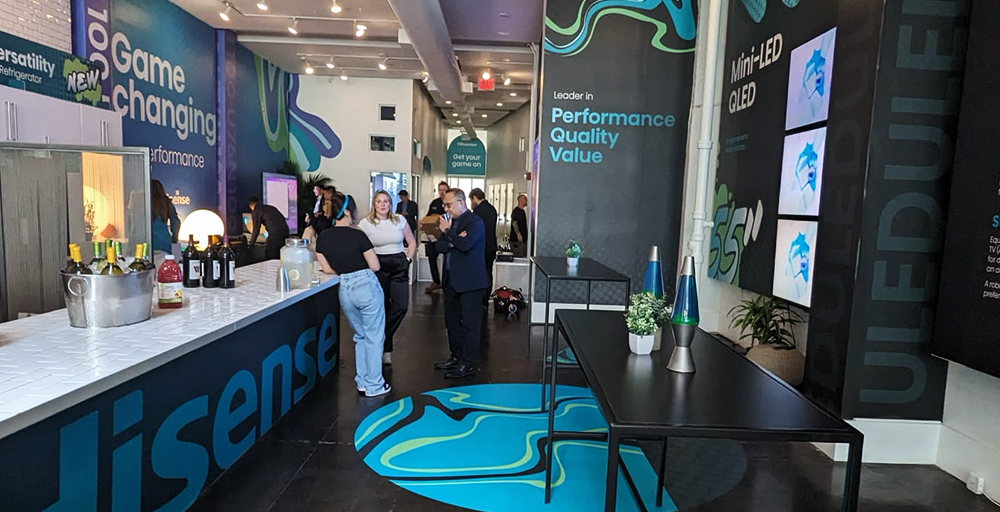
Large-format printing is a versatile tool used by businesses across a wide range of industries. Its ability to produce durable, vibrant graphics on a variety of substrates at any size makes it an essential tool for commanding attention and elevating brand visibility for effective storytelling to a broad audience. From trade show displays to billboards, banners, and interactive installations, large-format print projects play a pivotal role in transforming spaces and events into unforgettable experiences, where creativity and strategy merge seamlessly to help a brand come alive in larger-than-life dimensions.
DCC recently had the opportunity to print and install large-format graphics for an NBA-themed product showcase for Hisense USA at a press event in New York City managed by Impact XM for the industry’s top tech media outlets. DCC helped to transform what started out as a blank slate, into a fully branded and interactive backdrop for Hisense. Seasoned print professional and DCC Executive Vice President of Sales, Kevin Finn explores the creative and technical processes that a project of this scale requires.
Q: How was DCC awarded the opportunity to work on this project and how do you go about estimating a project of this scale?
A: DCC had the opportunity to work with Impact XM on a project for Hisense last year that went really well, so when they reached out to us this year we knew we wanted to be a part of this project and help bring their vision to life. We had to approach this project a little differently because we needed to size the client’s graphics to the event space based on graphic renderings, so we had to have our installation team involved from the estimation stage. Our installer, Steve Higgins was able to survey the space to determine the exact print sizes for all of the graphics and estimate the installation time.
Q: How did you make the client’s vision come to life?
A: A project of this scale requires a lot of attention to detail, communication, and collaboration. The client had designed all of the elements and provided us with renderings, but our team needed to work closely with their designers to determine the exact print sizes and make recommendations for different substrates to meet the needs of each installation. We were able to provide them with templates, almost like die-lines, to adjust each graphic to the appropriate sizing to accommodate the space. We also did substrate pull tests to test the adhesive bonds and help determine the right materials to use. There were over 100 graphics with various applications to columns, floors, walls, windows, ceilings, and more, so we had to approach each one individually, but also look at the project as a whole to ensure overall impact, consistency, and cohesiveness.
Q: What was the print process and turnaround time for this project?
A: The printing process was actually the easy part after all of the specifications were set. We printed on the Durst 350 on various substrates such as 6mm Sintra board for signage, Drytac Polar Smooth vinyl for wall graphics, General Formulations 212 Traffic Graffic® with 109 laminate for floor graphics, and 3M™ IJ8150 Scotchcal™ Clear View Graphic Films. We printed, quality-checked, and delivered all graphics within a week and then our team installed everything in 3 days and uninstalled everything in a day.
Q: What were some of the biggest challenges of printing a project of this scale?
A: With a project of this scale, coordination and organization are crucial to guarantee a successful installation. Our print production team labeled all of the graphics so that our installation team would know what goes where. Some of the graphics were so large that they needed to be tiled, so it was important that everything be prepared and printed perfectly so that they would install seamlessly. The event was held in an old bank and it can be challenging to hang graphics in older buildings. We had to take into consideration that the walls and floors may not be level, and we needed to acquire scaffolding to install ceiling and window graphics. In the end, though, this project really showcased the scope of what DCC can do and the client was happy with how everything turned out so it was a success!
Q: What do you think is the future for large-format and how do you see DCC growing?
A: We are seeing a return to and a growing market for large-scale events and trade shows, which had ceased during the pandemic. We are also seeing a lot of innovation and advancements in technology impacting the industry. Because of that, the creative capacities are endless, and printers who have broad capabilities and fast turnaround times will be able to succeed and grow with large-format print. At DCC, this is our wheelhouse and where we excel. We can bring any vision to life.
Do you have a large-scale idea for a print project that you would like to see come to life?
Exploring the Latest Trends in Customization BACK TO TOP
To DCC, print is personal
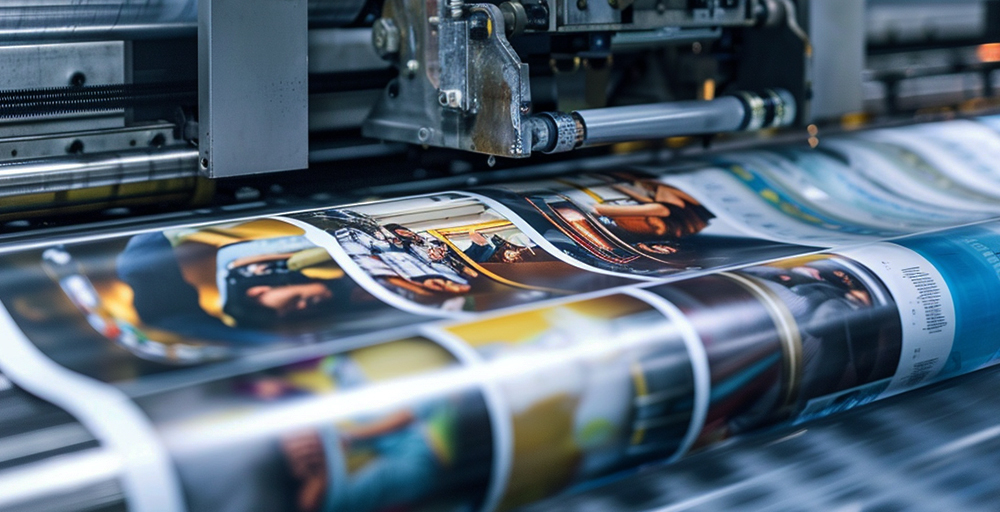
As more printers are faced with the rising demands of customers who crave individualism, it’s important for printers and professionals in the industry to understand the latest and most successful trends to ensure business growth. In 2024, customization is not only an influential trend in the printing industry but a growing necessity for many printers looking to meet the unique needs of manufacturers and customers alike. So, we’re looking at the top high-level trends in customization that customers and professionals should consider to drive sales and satisfy the masses this year and beyond.
Mass Customization
While mass customization is no new term, its continued popularity makes it a crucial aspect to consider when looking toward the future. Essentially, mass customization allows printers to do more with less by creating products specifically engineered for single or small groups of consumers at a low cost per unit. This gives the customer the satisfaction of having a personalized product while simultaneously controlling costs for the manufacturer. OREO is one company that has recently capitalized on mass customization by introducing OREOiD, an experience where customers can select custom packaging and even cookie specifications for birthdays or special occasions.
It shouldn’t be surprising that shoppers prefer individualism, and while the trend may be becoming more widely known and sought after by buyers, the data on its success has been around for some time. According to a 2015 survey conducted by Deloitte, in some categories, more than 50% percent of customers expressed an interest in purchasing customized products and services, and 1 in 4 of them were willing to pay more to receive a customized product or service. Yet, the mass customization market is still projected to grow at a CAGR of 4.6% from 2022 to 2031, according to Allied Market Research, as businesses continue to discover the value that custom packaging offers not only through sales but also through understanding their buyers and using that data to continually improve their products.
AI Integration
When diving into more customizable projects, it’s imperative that printers continue to sharpen their creative skills as well as their functional printing capabilities. Yet, any creative knows that innovative endeavors are often squandered by the mundanity of daily tasks. That’s where AI integration comes in. By utilizing the power of AI to optimize certain tasks, printers are more able to focus their creative attention on crafting personalized and unique deliverables for their clients, which, in turn, benefits businesses utilizing their print services.
AI can also help optimize the mass customization process by making it simpler to mass-produce personalized products, thus providing time and cost savings. One example of this could be if the print client wants to send out different deals to different mailing recipients during a mailing campaign. With advances in tech and AI, printers like our team at DCC, can easily do this and even personalize the assets further with names and other promotional points. Furthermore, when dealing with individualized products, mistakes can happen since the pieces are not uniform. AI can also help in this area by catching errors before they go to print, saving resources and time.
Client-Printer Collaboration
As the growing demand for personalized products and deliverables reaches print consumers, printers need to evolve into more collaborative partners in order to maximize their value to print clients. For example, if a client has tasked their printing partner with a monthly directive to mass-produce postcards without personalization or a target audience in mind, printers should put forth their expertise to guide that client toward improving their call-to-action to make it more unique in order to produce a higher ROI. In short, printers should think of themselves as a one-stop shop for their customer’s needs and take marketing into consideration when pitching clients and estimating projects.
As a print client, you deserve a direct partner in the printing process to help elevate your ideas and bring them to life by producing engaging and effective print assets to propel your objectives and maximize your ROI. In order to continue offering the most value to our customers, DCC is committed to being a collaborative and creative partner that works with our clients to help them reach their business goals through their printed products and promotions, and we know one of the most effective ways to do that is through custom printing.
Have an idea for a print project but not sure how to best reach your audience? Our team at DCC can work with your team to develop custom, innovative, and captivating assets to help convert your audience into customers. Contact us to learn more!
Evolving Trends in Food and Pet Food Packaging BACK TO TOP
New Innovations to Meet Consumer Demands
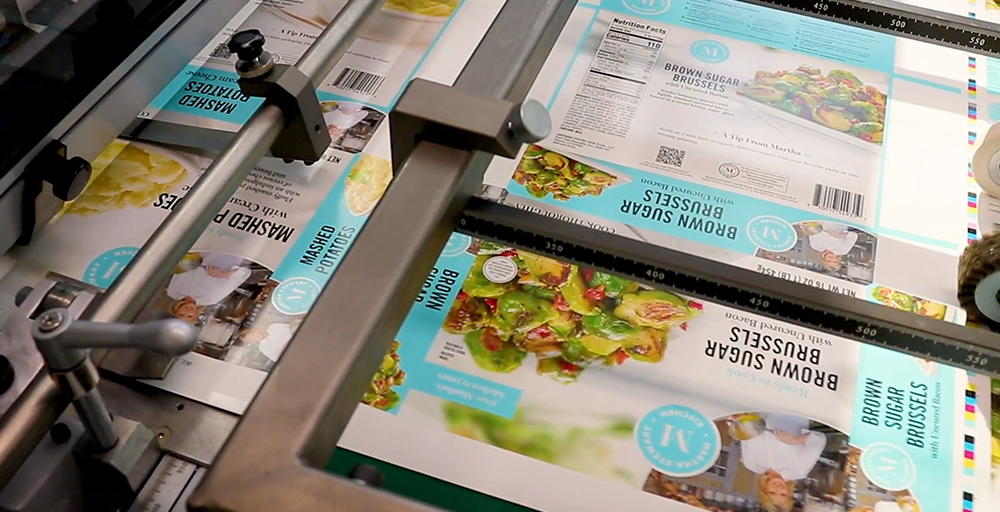
Food and pet food packaging serves many purposes; to protect the integrity of the product, to provide a convenient way to transport and store the product, and to relay messaging around the brand and the nutritional value of the product. Therefore, there is much for manufacturers to consider when it comes to packaging design, but the industry is facing new challenges thanks to notable shifts in consumer preferences towards sustainability and convenience. Food and pet food packaging trends are quickly evolving to meet these demands with innovative, high-tech solutions to both.
Cutting Edge Technology
Advancements in technology are driving innovation in food packaging, enabling brands to enhance functionality, improve safety, and create interactive experiences with smart packaging solutions. Technology is being used to both enhance the customer experience and improve efficiencies in production.
On the production side, we are starting to see automated supply chains that track production and supply inventory, detect pollution, and manage waste. Consumers will be able to benefit from smart packaging technology through Innovations such as temperature-sensitive labels and freshness indicators to help ensure product quality and safety and monitor the condition of a product. Smart packaging solutions also offer consumers convenient ways to view product ingredients, nutritional information, recipes, and more, allowing brands to tell their stories and connect with their customers.
Additionally, as people's desire for personalized experiences continues to grow, brands are adapting by providing customized packaging options. This trend is especially prevalent in the pet food sector, where pet owners are looking for personalized nutrition solutions for their pet’s unique needs. Utilizing smart technology to create customizable packaging enables brands to meet these preferences while also encouraging consumer loyalty and connection with the brand.
While convenience has typically been a key driver in food packaging, this now extends beyond ease of use. Almost a third (27%) of global consumers say that enhancing shelf life influences their purchasing decisions, second only to easy storage (34%). In the current digital age, consumers are looking for packaging that extends shelf life and minimizes waste. This has led to the development of active or modified atmosphere packaging, a solution that ensures the safety of the product by regulating moisture and providing antimicrobial protection.
Sustainability Continues to Reign
One of the most significant trends in food and pet food packaging is the increased focus on sustainability. Consumers are now actively seeking products that come in eco-friendly, recyclable, or biodegradable packaging. According to a survey, almost one-third (29%) of global consumers say that reduced material usage in packaging positively influences their product choices. This shift in consumer preferences has led to a surge in the use of compostable packaging, plant-based materials, and innovative designs that minimize waste and materials.
However, promoting sustainability alone is not enough for brands to win the trust of consumers. Consumers are becoming more aware and are able to identify "greenwashing", and therefore, require transparency and authenticity from brands to ensure that they are purchasing sustainable products. As a result, we are seeing more brands focus on designing their packaging in a way that provides clear, informative, and detailed information about the product's ingredients, nutritional value, sourcing practices, and more. Brands are leveraging technologies such as QR codes and augmented reality to achieve this and further engage with consumers directly.
Going Digital
It should come as no surprise that in this digital age, we are seeing more and more of a shift to digital printing when it comes to food packaging. The technology of digital presses, such as the HP Indigo 15k we have here at DCC, provides on-demand printing and fulfillment for quicker turnaround times. Additionally, the efficiency of digital allows for no minimum quantities which helps reduce waste and aligns with sustainability efforts. It also allows for personalization and customization, along with ease of regulation compliance, which comes in handy for more sensitive products like cannabis.
The packaging industry for food and pet products is currently undergoing a significant transformation, driven by changes in consumer preferences and technological advancements. The future of packaging is being shaped by sustainability, transparency, convenience, personalization, and technology integration as brands strive to meet the demands of today's discerning customers while simultaneously reducing their environmental footprint. As these trends continue to evolve, we can expect to see even more innovative solutions emerge, leading to further improvements in the way we package and consume food and pet products.
At DCC, we pride ourselves on staying up-to-date on the latest trends and technologies so we can make any vision come to life. Learn more about our capabilities and reach out to our sales team to work with us in 2024!
Innovation in Large Format Substrates BACK TO TOP
Unlocking Creativity with New Solutions
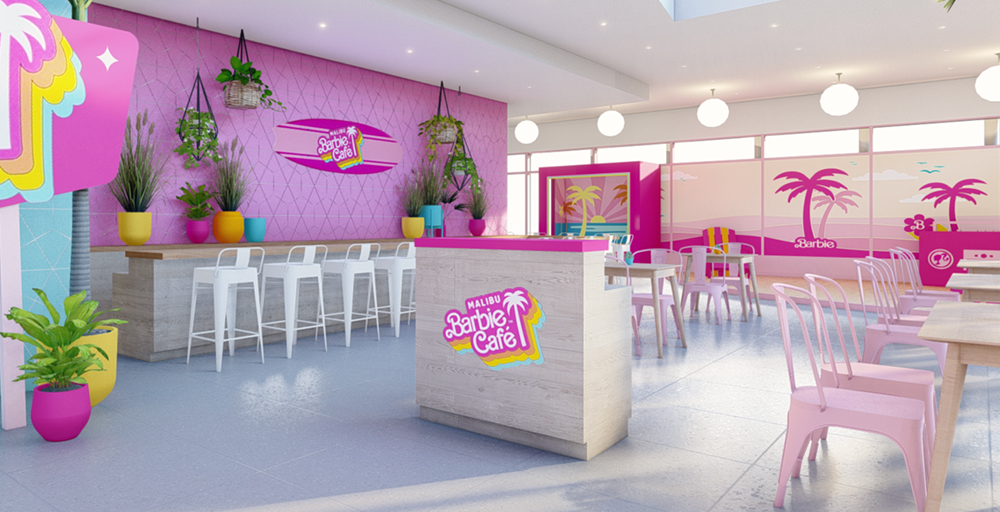
In the ever-changing world of print technology, large format printing continues to push boundaries and redefine possibilities. This year we expect to see new innovation and creative concepts emerge with a focus on technology and sustainability. With these new innovations, large format is exceeding the demands of diverse industries, thanks in large part to the latest substrates that are providing new solutions and redefining trends, giving businesses more flexibility to think BIG.
Top large format verticals in 2024.
Large format printing is a versatile tool used by businesses across a wide range of industries. It allows brands to communicate and engage with their audience in infinite and unique ways. Some of the top ways that large format print is being used this year include:
- Retail Point-of-Purchase (POP) and in-store displays.
- Architecture, Engineering, and Construction plans and on-site signage.
- Commercial vehicle wraps and fleet graphics.
- Outdoor advertising and billboards.
- Custom fabric and textile printing.
- Event and trade show graphics.
- Fine art and photography prints.
- Custom packaging and labels.
- Healthcare and Medical Imaging signage and patient education.
- Residential and commercial interior décor and wall coverings.
New Innovations in Substrates.
When it comes to large format printing and the printing industry in general, your choice of substrate greatly impacts the design and success of your project. No matter the purpose of your printed pieces, the substrate should be durable and versatile and provide a canvas for vibrant, high-quality graphics. However, new advancements in technology are providing printers and designers with an expanded selection of materials to unleash their creativity and push boundaries.
New in Sustainability.
As the demand for sustainability continues to trend, it has become a driving force in the printing industry, particularly with the availability of eco-friendly substrate options. Brands are challenging printers to use materials that reduce their environmental impact without compromising quality or durability, and by adopting sustainable practices, large format printers are not only meeting these demands but also contributing to a greener future.
Rigid Materials. Many companies are looking for alternatives to medium-density fibreboard (MDF), corrugated plastics, and foam cores that are typically used for rigid applications but can be harmful to the environment. Sustainable fiberboard is a newer option and a great alternative that is engineered from recycled fibers so they are repulpable and non-toxic. They are also ultra lightweight and flat packable, so they are easier to transport, yet do not sacrifice durability and print quality.
Vinyls and Adhesives. Wall and floor graphics are very often made for short-term use and created using toxic materials, making them a less-than-ideal choice for the environment. However, new greener alternatives have come to market that include eco-water-based adhesives or adhesive-free clings and PVC-free vinyl that are waterproof, durable, and high-quality, making them a great solution without sacrificing performance.
New in Textiles.
When it comes to large format, we tend to think about promotional materials like banners, trade show booths, and window clings, but as technology evolves, it has expanded beyond traditional substrates and applications. Large format print textiles are revolutionizing the way we think about design and offering tactile appeal. In fact, the use of textile substrates in large format printing is expected to grow by 18-25% this year. Part of the reason that they are becoming so popular is their versatility. New innovations in textiles are emerging that are a modern alternative to traditional wall coverings that are easier and cheaper to install and transport, making them an optimal choice for hospitality and retail environments with large footprints or constantly changing graphics. Thanks to these benefits and the seamless aesthetic that these create, we expect this to be an emerging trend this year.
Acoustics. Sound, or the lack thereof, is becoming an important aspect of large format design when it comes to decorative elements, especially for homes, restaurants, hotels, and retail spaces where optimal acoustics impact the atmosphere. Sound-absorbing textiles not only add visual appeal or function to a space, they also add comfort for the senses.
Backlighting. Along with sound, lighting can also impact the overall tone and set the mood, therefore is an element that is also being implemented into wall and ceiling coverings with the use of backlit textiles. Thanks to new technology in textiles, suppliers are developing specific weaves that create permeability and light diffusion and set new standards for this substrate.
Large format printing remains a powerful tool for brands to deliver impactful and memorable experiences. This year we can expect to see the industry continue to embrace innovation and find creative ways to interact and communicate in new ways that resonate with audiences.
At DCC, we pride ourselves on staying up to date on the latest trends and technologies so we can make any vision come to life. Learn more about our capabilities and reach out to our sales team to work with us in 2024!
Unlocking Efficiency: Navigating Graphic Designer’s Software and Print-Ready Files BACK TO TOP
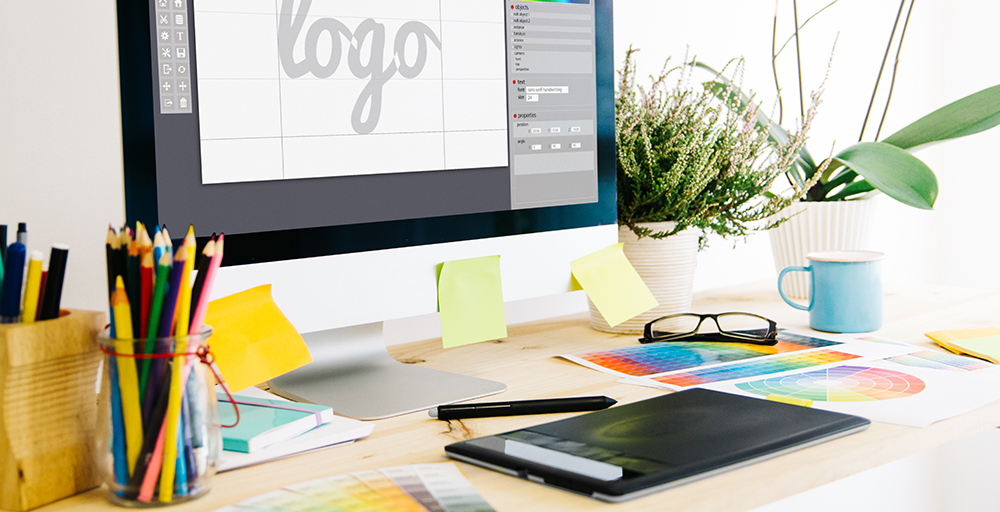
A Discussion with DCC’s Prepress Manager Ralph Catani.
In today's fast-paced tech landscape, staying current with software updates poses a challenge for both printers and their clients. As graphic design technology evolves, it raises the question: does it streamline processes or complicate the printer's tasks? While a well-designed project is a start, its final printed form hinges on proper file setup. In the prepress phase, files undergo proofing, quality checks, and transferring the design onto printing plates. Submitting press-ready files not only saves time and money but also enhances the end product's quality and client experience. Thus, designers must master file preparation to optimize outcomes.
Design Software
While Adobe software programs continue to dominate the marketplace, including Adobe Photoshop, Illustrator, and InDesign; designers are exploring additional technologies for speed, efficiency, and/or to save a few dollars. During prepress, InDesign is typically used for page layout, while Photoshop and Illustrator are used for retouching images, converting color profiles, and making any needed graphic edits. DCC Prepress Manager Ralph Catania says, “InDesign is by far the software most often used for page layout and is the most universal for brand development when a client will be printing across several formats.” We highly recommend using these to help streamline the process and ensure the integrity of your design. These programs are the best option for keeping your brand imagery and colors consistent across different print formats and substrates. Thanks to the rise of content creators on social media, there are other user-friendly design programs, such as Canva, that are aimed at making graphic design more accessible to anyone. According to Style Factory, Canva is used by 170 million people each month. As Canva continues to evolve in providing templates for printed collateral, so have their output options. By clicking the “share” and then “download” buttons, end users can save a “PDF Print”' where crop marks, bleed, and color conversion to CMYK (Cyan, Magenta, Yellow, and Key or Black) are possible. It is important to note that templates that include neon and bright colors could look dull and muted in the final print production.
Once the software hurdle has been jumped, page layout, color and fonts, and artwork resolution contribute to the efficiency of the prepress process and the quality of your end product.
1. Page Layout
All design elements converge in your page layout, reflecting the final trim size. Multi-page files can be in reader spreads (sequential order for reading) or printer spreads (for print and assembly). Provide single-page reader spread files for prepress to visualize the final piece accurately. Consider binding and page margins; for instance, perfect binding results in a loss of about ⅛” on the inside edge of each page, so beware of where critical content is placed. Avoid splitting words or letters across pages and adjust image crossovers to ensure proper alignment during binding.
2. Colors and Fonts
Consistency in color is crucial for brand recognition and project aesthetics. Most printers utilize CMYK color profiles, so creating files in CMYK ensures color consistency. Pantone's standardized color matching system, or PMS colors, ensures precise color matching. When using spot colors, ensure consistency by selecting the same color base or number in each design program. The use of shade variations or tints to solid colors or body copy within your project should be created with the swatch palette versus a transparency which can cause issues. For fonts, embed or convert them to outlines to prevent “missing font” issues. Use proper stylized fonts rather than stylizing within the design application.
3. Artwork Resolution
Ensuring high-quality graphics is crucial for project success. Vector files created in Adobe Illustrator are preferred for graphic elements due to their scalability without loss of quality. For photographic images, use Adobe Photoshop with a minimum resolution of 300 dots per inch to avoid resolution loss when scaling. All graphics should be placed directly into the page layout, with linked elements included in files to prevent quality issues. Lastly, we know some designs can be very intricate, containing specialty features or even requiring construction. Whenever possible, send a hard copy mock-up, or die line to demonstrate the layout and pagination to ensure everyone is on the same page (no pun intended)!
To ensure your printed piece meets expectations, it's crucial to set up your files correctly. Opting for a PDF format is often the best choice due to its reliability. That being said, 95% of the PDF files we receive have issues and are unsuitable for print, which can negatively impact the project. Catania says, “The biggest impact it has is on the client’s time. It takes time for the prepress team to fix issues or request new files, and that can set a project back.”
Here are some things to consider to set you up for success before submitting your file:
• Is the file format appropriate for print production?
• Are the colors in the file set correctly?
• Is your layout sized correctly with the appropriate bleed?
• Is the resolution of images and graphics suitable for print?
• Have all fonts been properly embedded or outlined?
• Are there any missing or linked files?
Catania adds, “It’s pretty simple - if you cover those bases, you'll be fine.”
We strive to deliver top-quality results to our clients, aiming to meet and exceed their expectations. By setting them up for success, we save them time and money while ensuring their satisfaction with the final product. That's why we offer a Prepress File Submission Guide, providing valuable tips on file creation when necessary. Think of partnering with DCC for your next project!
Sherburne Partners Invests In Digital Color Concepts BACK TO TOP
Strategic Partnership Supports Growth in Print and Packaging Manufacturing
Digital Color Concepts (“DCC” or the “Company), a manufacturer of folding carton packaging and leading provider of premium commercial print services, today announced a majority equity recapitalization by Sherburne Partners (“Sherburne”). This investment by Sherburne, a private investment firm based in New York City, aims to accelerate the Company’s growth in packaging operations, enable DCC’s management team to optimize the business and strengthen DCC’s unwavering commitment to customer satisfaction. Based in New Jersey and New York, DCC will continue to be led by the existing management team, including industry veterans President Don Terwilliger and CEO Stephen Pandolfi, who will remain significant equity holders in the business. Genesis Park, a Houston-based private investment firm, provided debt financing to support the transaction.
“DCC has a demonstrated track record of exceptional quality, investing in new equipment and technology to meet the production needs and critical turnaround times that are integral to our client’s success. We are excited to see continued growth through our partnership with Sherburne,” says Terwilliger. Sherburne, led by Co-Managing Partners Oliver Patten and Parker Shields, focuses on long-term oriented, strategic growth investments in industrial and business services industries. Patten said, “We are thrilled to invest in DCC. Their commitment to providing exceptional quality work and a premium experience for their clients aligns strongly with our strategy to build a fully integrated, growth-oriented print and packaging platform serving attractive end markets with a customer-centric approach.”
“We are excited to invest for the future and partner with Don, Steve, and the management team to support the Company’s continued growth while maintaining DCC’s unwavering commitment to its customers and overall mission. We are looking forward to continuing to pursue complementary acquisitions as we build out the DCC platform.”
Parker Shields
About Sherburne Partners
Sherburne Partners (“Sherburne”) is a private investment firm based in New York City that invests in and builds upon companies in fragmented industrial and business service industries. Sherburne invests primarily in founder and family-owned businesses with attractive growth prospects and customer-centric cultures. Sherburne makes majority-control investments and provides capital to create enduring market leaders.
For more information on Sherburne, please visit sherburnepartners.com.
About Genesis Park
Genesis Park is a Houston-based private credit and equity investment firm that supports growth and later stage lower middle market businesses through flexible debt and equity capital solutions and strategic guidance. Genesis Park generally targets companies with at least $10 million of revenue and $3 million of EBITDA, with proven business models and seasoned management teams. Genesis Park is committed to partnering with the companies and management teams in which it invests to facilitate growth, transition, and success.
For more information on Genesis Park, please visit genesis-park.com.
New Year, New Print Industry Trends BACK TO TOP
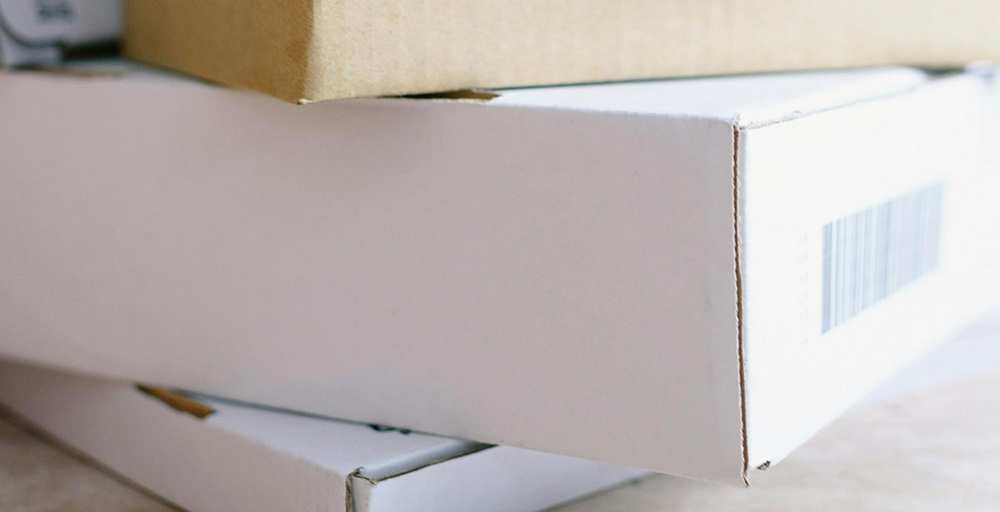
How technology and sustainability are impacting the print industry.
New year, new trends! It’s a new year, which brings new opportunities and new trends within the print and folded carton industries. It’s important for any printer in the industry to be aware of the ever-changing needs of both clients and consumers and to stay on top of trends in order to best serve them. So, we’ve taken a look at what top trends we can expect to make the biggest impact on the industry in 2024, and there are two common threads we see consistently emerging: technology and sustainability. Both play very important roles in what we do and how we do it and have been influencing the industry for a while, so it may come as no surprise that these will continue to do so this year, but perhaps in new ways.
Artificial Intelligence (AI) Technology
The advancements in AI have historically impacted commercial printers, but now more than ever, it is transforming how we do business with profound implications on efficiency, personalization, and sustainability. Using AI for predicting equipment maintenance, managing inventory, automation, data analysis, and more can help increase productivity, lower costs, and enhance creativity, therefore giving printers who embrace AI a competitive advantage.
- Smart Technology: One trend we are excited to see grow in the folded carton segment is smart packaging. Interactive solutions are going to take print packaging to the next level with the integration of technology that will provide consumers with real-time information about the products and encourage brand engagement. Sensors, QR codes, smart labels, and tag chips are just a few of the things we can expect to see popping up, turning product packaging into a digital tool and giving companies an opportunity to further engage with their audience.
- Variable Data Technology: The use of variable data is not new to the print industry. It has been around for a while and has been used to personalize print materials like direct mail, for example. This year, we can expect this concept to continue further as the demand for more unique or hyper-personalized products rises. In today's digital landscape, data is a very valuable commodity that can be used to help increase revenue and improve customer service. Now more than ever, companies will be looking to capture data and leverage it in new ways to develop unique experiences that are even more custom-tailored to the end user.
- Automation: Efficiency is key when it comes to running any business, as it saves time and precious resources that cost money. With AI technology comes the ability to automate tasks for increased efficiency. This is something we will see go even further this year as printers use predictive automation for ordering supplies and scheduling maintenance, along with quality assurance for routine prepress tasks, such as color correction and font matching.
Nanotechnology
One of the most important aspects of creating both beautiful and functional printed materials is the quality achieved by resolution and precision. The difference is in the details, literally. Another trend we are seeing emerge this year is how nanotechnology impacts the printing process. With advances in nanoparticle inks and nanoscale techniques like nanolithography, we are seeing products with greater color saturation, durability, and unprecedented resolution, making for more aesthetically and functionally pleasing projects.
Sustainability
Caring for the environment is clearly not a new concept in general, but in recent years we have seen it become more of a focus for brands as the demand for products made from sustainable materials and companies who use environmentally friendly practices has increased. In fact, last year, 75% of consumers said that they feel sustainability is important, while 55% said that they are willing to pay more for eco-friendly products, so this is a trend we will continue to see dominate the industry.1
This year, more printers will be taking on sustainable initiatives with greener production methods and resources to lower carbon footprints, such as recycled or FSC-certified paper, vegetable or water-based ink solutions, and renewable energy sources, such as solar or wind. And we will likely see new and innovative materials emerge, such as sustainable foams made from plant-based materials. Clients may also look to you to optimize the print process and reduce waste from overproduction. For this reason, we can expect to see a higher demand for digital printing, which uses less energy and resources compared to other print methods.
Lastly, now more than ever, transparency is going to drive the sustainability movement as consumers look at brands more closely when making purchase decisions. We will see more brands printing sustainability initiatives and certification logos on packaging, for example, to showcase their efforts and put their money where their mouth is.
We’re excited to see where the new year takes us. At DCC, we pride ourselves on staying up to date on the latest trends and technologies so we can make any vision come to life. Learn more about our capabilities and reach out to our sales team to work with us in 2024!
2023
Sustainable Printing and the Forest Stewardship Council BACK TO TOP
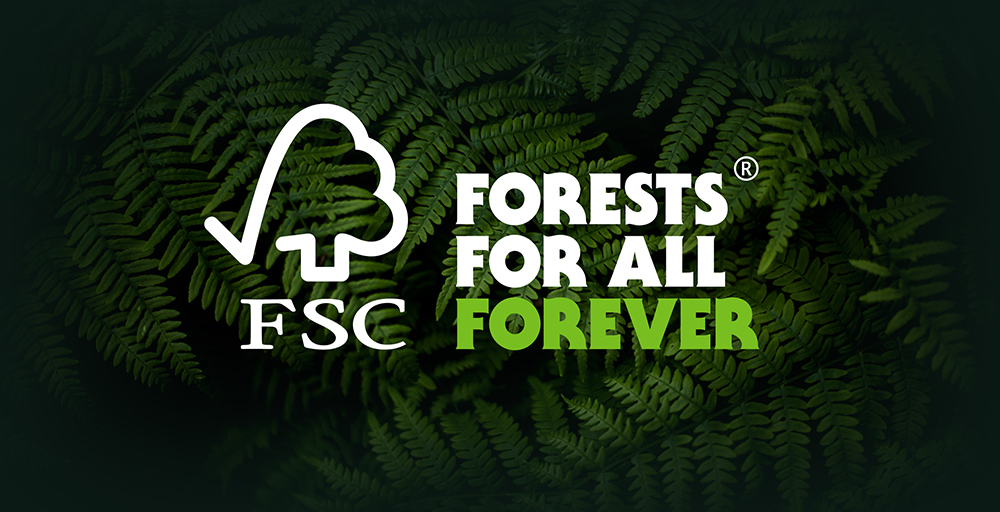
dcc Cares About Our Community
At dcc, we believe that corporate responsibility begins with taking care of our environment. Sustainable printing is essential to our commitment to protecting the environment and promoting responsible resource management. For that reason, we are always looking for new and better ways to manage our use of materials and energy so that we can do more while using less. In 2007, dcc became an FSC-certified printer in order to meet their global standard for responsible forestry, and our certification is third-party managed by the Rainforest Alliance to ensure that our use of resources is environmentally responsible.
The Forest Stewardship Council (FSC) is a significant component of our commitment to sustainable printing. The FSC is an international non-profit organization that promotes responsible management of global forests and sets rigorous standards for sustainable forest management to ensure that they are harvested in an environmentally, socially, and economically responsible manner. To achieve this, the FSC provides certification for forests and forest-based products so consumers can make more informed choices when purchasing paper and wood products.
It’s clear that the FSC plays an instrumental role in sustainable printing and how printing facilities can help contribute to its cause through their printing practices, but what does sustainable printing really mean?
Sustainable printing refers to the process of producing printed materials while minimizing the negative environmental and social impact. The FSC logo signifies that the paper used in that product comes from responsibly managed forests. Furthermore, the certification also ensures that printing operations adhere to high environmental and ethical standards throughout the entire supply chain and printing process.
What does being FSC-certified mean, and what is the global impact of sustainable printing? Responsible forestry and the use of FSC-certified products help to prevent deforestation and the degradation of natural habitats. This, in turn, helps to maintain our planet’s ecosystems and support biodiversity. Sustainable practices help to minimize greenhouse gas emissions and reduce your carbon footprint. The FSC also promotes fair labor practices within the forest industry, ensuring the rights and well-being of local communities and indigenous people.
While being FSC-certified clearly benefits the planet and its environment, it can also greatly impact your business. Going “green” is not a passing fad. In fact, the demand for environmentally friendly products and services continues to grow, and sustainability has become a key factor for brands and consumers all over the world. For example, global Google search inquiries for topics related to sustainable products increased by 130% between 2017 and 2022. In 2023, 75% of consumers said that they feel sustainability is important, while 55% said that they are willing to pay more for eco-friendly products. On the flip side, 84% of consumers said that they are likely to alienate a company that has poor environmental practices. With that in mind, it’s no wonder that sustainable practices and an FSC certification give printers a competitive advantage as an environmentally responsible company.
To sum it up, sustainable printing practices are crucial for reducing the environmental impact of the printing industry. So how does a company that is interested in being “green” specify sustainable printing and packaging? There are a number of things to consider whether your printing company is FSC-certified or not:
- Use environmentally friendly inks and materials. Ask for soy or water-based inks, which contain fewer volatile organic compounds (VOCs) than traditional petroleum-based inks, and select paper and packaging materials made from recycled, biodegradable, or FSC-certified materials which, as you now know, will come from responsibly managed forests.
- Optimize your design and printing process. Create a design that minimizes material and prints only what you need when you need it to reduce waste from overproduction. Specify that your documents be printed duplex (double-sided) where you can conserve resources and reduce cost. And go digital! Digital printing typically uses less energy and resources and, therefore, has a smaller environmental footprint compared to offset printing.
- Consider the energy and emissions. Work with a printer that offsets or uses renewable energy sources, such as solar or wind, to lower their carbon footprint and specify the use of equipment that consumes less electricity and is more efficient, such as a digital press.
Keep it local. Work with a printer who sources their materials locally and utilizes efficient freight and delivery transportation practices, such as consolidated shipments and optimized routes, to help reduce emissions from transportation.
If sustainability is a priority for your business, then working closely with a printer whose practices align with your objective is essential. Look for printers with environmental certifications such as FSC, the Sustainable Green Printing Partnership (SGP), and Environmental Management ISO 14001 certifications. Ask about their practices and seek their input on sustainable printing. This collaborative partnership can lead to more effective and sustainable printing solutions.
Along with dcc’s FSC certification, we also joined the SGP in December 2015 as a certified printer with a commitment to continuous improvement. Learn more about all of our green initiatives, certifications, and commitment to sustainable printing.
1 Ruiz, A. (2023, September 9). 51 Huge Environmentally Conscious Consumer Statistics. Theroundup.org. Retrieved November 17, 2023, from https://theroundup.org/environmentally-conscious-consumer-statistics/
Paperboard 101: Don’t Be Bored with BOARD BACK TO TOP
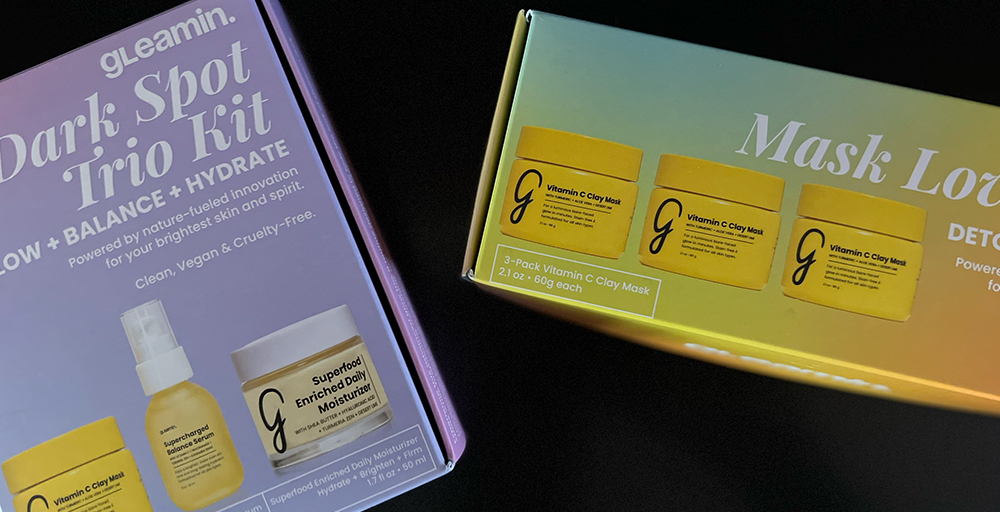
The Importance of Knowing Your Paperboard Substrates
One trip to the grocery store will tell you how diverse, versatile, and essential paperboard packaging is to consumer brands. Almost all consumer products are shipped and sold in folded carton packages that not only protect what’s inside but also connect the consumer to the brand. Packaging is an integral part of the consumer experience, so it’s important to understand the differences in paperboard substrates so you can select the right solution for your needs.
Paperboard is essentially a thick paper that can be printed on, cut, scored, folded, and/or die cut to meet your product’s individual packaging needs. It helps to create your brand’s first impression on the consumer, and the possibilities for creating something unique are endless. While Folding Box Board (FBB) is the most common type of paperboard, there are numerous options of coated paperboard substrates, all with their own distinct characteristics suited for different purposes. Understanding the differences will help you make an informed decision when selecting the right paperboard for your packaging design project.
Folding Box Board (FBB)
FBB is known for its strength and rigidity, which make it an obvious choice for projects requiring durability. It is made from a mix of virgin and recycled fibers making it more environmentally friendly and cost-effective. However, due to its slightly duller and rougher surface, FBB may not be the best option for print quality and visual appeal. It is best suited for food packaging and pharmaceuticals.
Pros: Cost Effective, Sustainable, Structural Integrity.
Cons: Visual Appeal.
Solid Bleached Sulphate (SBS)
SBS is best known for its high opacity and bright white finish, making it a great choice for high-end luxury goods requiring accurate color reproduction and exceptional print quality, such as cosmetics. It is made from 100% bleached virgin fibers, giving it a smooth, glossy surface, and it performs great when printing high-resolution graphics.
Pros: Brilliant Finish, Aesthetically Pleasing, Fade Resistant.
Cons: More Expensive, Doesn’t Score as Cleanly, Not Eco-Friendly.
Coated Recycled Board (CRB)
CRB is best known for being the strongest option thanks to its multi-ply construction that provides versatility and stiffness. It is made from 100% recycled fibers, of which 35% is post-consumer, therefore making it recyclable and the most environmentally friendly option. Its double clay coating makes it a great option for printability. CRB is a great choice for toys, food, and household goods packaging.
Pros: Environmentally Friendly, FDA Compliant, Strongest Substrate.
Cons: Coating makes it less easy to break down and recycle.
Coated Natural Kraft (CNK)
CNK is made of 15% pre-consumer fibers and will produce the strongest folded carton that you can make. It is typically made with a matte clay coating on one side and natural kraft on the other - think 12-pack beverage carriers. CNK offers stability and durability and is moisture and tear-resistant, making it ideal for cold chain food, retail, and pharmaceutical packaging. Its matte finish also offers superior printing capabilities.
Pros: Moisture Resistance, Environmentally Friendly, Superior Print Quality.
Cons: May not be suitable for special processes such as embossing or foil stamping.
With so many options to choose from, you’ll want to be prepared with the right questions to consider in order to find the ideal solution for your project. For example, surprisingly, cake donuts and glazed donuts fall into different categories and may require different types of packaging. Answering some of the questions below will help you determine which substrate you can use for the most efficient packaging so you can properly spec your project with your printer and set expectations.
- What will go inside the packaging?
- What is the weight of the item that will go inside?
- Does the package need oxygen or a moisture barrier?
- Will it contain a liquid or substance such as food?
- If it is food, what is the FDA classification?
- Does it require refrigeration or freezing?
- What is the expected shelf life?
- Are there any regulations that need to be met?
- What type of aesthetic are you looking for?
Now that you have a better understanding of the different types of paperboard, let dcc take your packaging project to the next level.
What is your printed waste percentage? BACK TO TOP
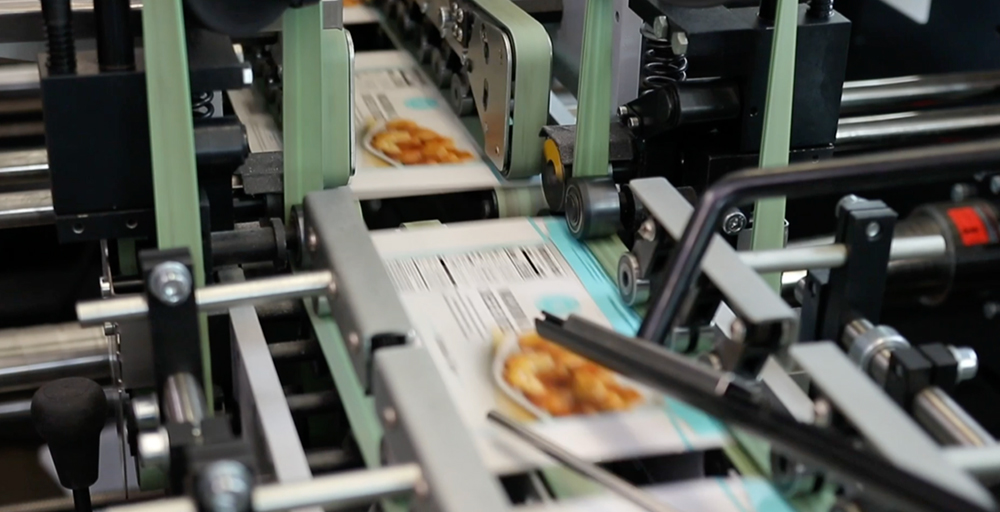
The Importance of Quality Paperboard Printing & Machinery in Packaging Automation
When we hear the word “automation,” a typical vision comes to mind: warehouses filled with machinery that are powered by sophisticated electronic technology that allow for efficiency, speed, accuracy, and less reliance on human manpower. Yet, have you ever considered the importance of how the quality of printed paperboard and machinery work together to contribute to these efficiencies? For the typical packaging engineer, maintenance manager, and plant manager, they know the ROI for each machine in time, labor, and output, and there is a love/hate relationship when it comes to the quality of printing that goes into packaging that is being fulfilled as it impacts the bottom line directly.
For industries that include, but are not limited to, food, pharmaceuticals, toys, and cosmetics, the success of their packaging, especially folded cartons, is measured closely, and high spoilage levels are frowned upon. As with any manufacturing process, there is a waste factor that is expected for set-up or what is known as “make-ready” costs in the printing industry. Typically 3-5% is factored in for this type of packaging waste which does not account for additional errors that can include, but are not limited to, the printed packaging not being pre-broken, seamed and palleted improperly, or has incorrect coatings which can interrupt automation workflows.
A perfect example of a packaging error is when a carton does not have the correct coating which creates a jam. That jam establishes a disruption in the output levels, drains labor resources, and if perishable items are part of the process, this establishes a need to re-freeze or refrigerate products so they don’t spoil. The challenge here is that typically, when margins get tight, purchasing departments will opt for a less experienced printing vendor or cut corners in the printing process that winds up costing more in the long run. As a result, it is important for the production team to answer the question, “When it comes to printed packaging, how much waste and automation disruption currently exists?” The numbers don’t lie; if the percentage is high or steadily increasing, it is time to make a vendor adjustment, especially in situations where hundreds of thousands of packages are being fulfilled on a daily basis.
It is important to look at the flip side of the equation in regard to quality machinery. In the packaging industry, vendors such as ADCO, who provide clear performance and efficiency guidelines, pride themselves on guaranteeing 98% minimum “uptime” for their machinery. There is a caveat: there are required efficiencies, one of which is the dependency on accurate printing specifications. The industry printing standards include “various coatings, scoring, die cutting, gluing, pre-breaking, weight and density, flatness, or warping, etc.” Another pertinent example is relative to the beauty industry and varnishing techniques. Soft-touch varnish is a finishing that we all know and love - it’s the velvety feeling that you experience on a printed piece, typically on the exterior box. How does this luxuriously printed end product make it through the manufacturing process with minimal scuffs, scrapes, and dents? It all comes down to the combination of the quality of the printing and machinery that can meticulously handle the packaging automation process without further damage.
Are you experiencing machinery and printing issues in your packaging fulfillment process? As an ADCO-complaint vendor, a dcc sales representative is available for an onsite visit to review your current automation processes and outline how you can benefit from next-level print production. Remember, we are an Idealliance G7® Master Colorspace Qualified Facility and environmentally-certified provider that delivers excellence in color, short lead times, no minimum quantities, competitive pricing, and on-time delivery to support your bottom line.
Request a review at info@dccnyc.com.
Top Tips for Specifying Print Projects BACK TO TOP
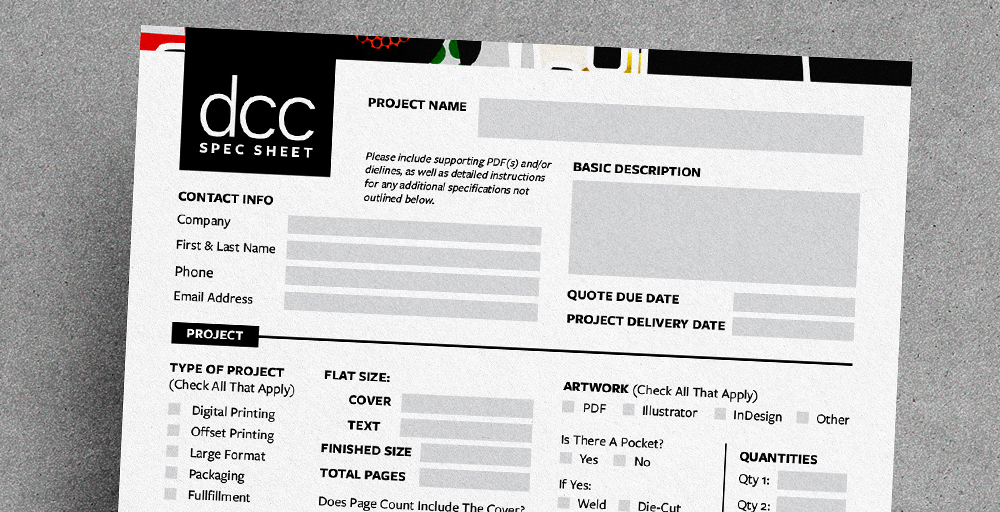
No matter the scale of your project, a lot of time, money, and effort goes into planning and production. Print production is often the final step in bringing your project to life, and it goes without saying that you want to ensure that the print process runs smoothly and that your end product meets all expectations. However, there are several common blunders that can occur leading up to and during print production that can cause issues or delays, even for the most experienced print buyers, and can cost you more time and money than anticipated. With proper preparation and knowledge, these mistakes can easily be avoided. Let’s take a look at some common mistakes and challenges that companies face, along with tips on how to properly specify your next print project and streamline the process so you avoid impacting your bottom line.
The success of any print job can hinge on proper specifications from the start. That is why it is key to establish clear communication with your printer so you can both ask questions, set clear expectations, and eliminate the guesswork that can result in lost time.
Ro Sandello, dcc Sales Assistant
Challenges
Bidding. Challenges can occur immediately with the bidding process if companies don’t provide accurate or complete information. Oftentimes, companies will reach out to multiple printers to compare costs. Doing so may automate the process. However, facility-specific information might be lost during this process or further ideation and conceptualization could be lacking. Incomplete information provided to the printer can result in a loss of time and money, as well as inaccurate quotes. Knowing up front what your needs are or what questions to ask can help streamline the bidding process and set you up for success.
File Formats. Once a print project is bid and a printer has been procured, one of the most common mistakes that businesses make is not providing their print-ready files in the proper format. Printers typically require files submitted in a specific format. Clear communication with your printer can help determine what they need so you can provide the files accurately the first time. Providing the proper file format with sufficient resolution, proper color model, and correct fonts will help ensure design accuracy and consistency and help avoid issues down the road.
Proofing. Nothing will halt a project faster than identifying a typo or mistake midway through a press run, but believe it or not, not thoroughly proofing content and artwork is a common mistake that print buyers make. Spelling or grammatical errors, alignment issues, errors in image placement, and more, no matter how minor, can greatly impact your final project and cost you money and time if they need to be rectified. That is why it’s imperative to catch all errors prior to your press run and avoid potential issues.
Communication. Just like with any relationship, poor communication can be the downfall of a project and can affect your bottom line. Not being upfront and establishing clear communication with a single point of contact at your printer is another mistake that can lead to ambiguous expectations and cause avoidable issues. Communication is not only key but goes both ways. Printers should be clear with their needs and work with clients to establish clear-cut project goals.
Being aware of these challenges and avoiding common mistakes can help to ensure your project is a success and that the expectations of your business and the printer are met so that no additional time or money is wasted. Proper preparation can ensure that you avoid these pre-press blunders.
Tips for Success
Planning
Plan out your project in advance so that you provide the proper specifications to the printer from the beginning and ensure an accurate quote. Planning in advance will also provide you with ample time to make adjustments if and when issues arise. Some things to consider:
- File format - printers typically require specific formats, such as PDF, that prevent inconsistencies in color and fonts when set up properly. Submitting the wrong file format or low-resolution image files can cause issues with the printing process. It’s always a good idea to provide a PDF file with your specs when requesting a quote to help your printer visualize the project and provide the best recommendations possible.
- Color - knowing upfront how many and what colors your project will need will help your printer determine the best print method and an accurate quote. Are you using PMS colors for consistency? Will your project be full-color? Will there be spot UV? These are all things that will impact how your job is quoted, how you set up your files, and help your printer set you up for success.
- Page Setup - set up your documents with the correct dimensions, image layout, and bleed areas to avoid problems during printing and ensure that your final printed piece aligns with your vision.
- Quantities - when it comes to printing, it’s often the set-up process that adds the most cost to your project. It’s a best practice to order more than you think you’ll need to avoid paying set-up fees again if you need more. Ordering excess will be cheaper in the long run. It’s always a good idea to request a quote for multiple quantities upfront to see the cost breaks.
- Paper - knowing what type of paper is best for your project is crucial to the success of your project. There are so many paper options to choose from, ranging in weight, quality, color, texture, and more. Know what type of paper you envision for your project, and talk to your printer about what will work best. For example, uncoated paper will work best if your final printed piece will be written on. Other things to consider are the type of press, heavy ink coverage, cover pages, and multiple paper weights. If budget is a concern, specify your paper needs and ask for alternatives that will save you money. It’s also recommended to order your paper in advance so it can acclimate before it goes into production.
- Bindery - when it comes to printed pieces like brochures or booklets, providing accurate specifications for folding and binding will ensure a seamless process. Be sure to consider and specify any binding, gluing, scoring, etc., that may be needed. For example, if your project requires a pocket, designate whether it will be welded or glued, or if you are printing a book, what type of binding you want.
- Sustainability - if keeping your project “green” is a requisite, this is important information to discuss with your printer upfront so that they can provide you with FSC, sustainable, or recycled paper options, along with any other green mission practices.
Communication
Establish a relationship with your printer and identify a direct point of contact so that communication between you and your printer is easy and seamless. This will be the key to setting you up for success. Provide the printer with clear project goals and expectations and ask questions to ensure that you provide the printer with all the proper and accurate information to avoid delays, additional costs, and issues down the road. Keep communication clear throughout the print process so you can address issues promptly as they arise.
Pre-Press
You have provided initial specifications to the printer, and they have provided you with quotes, so now it’s time to prepare your project for the press. If your project was specified accurately, you shouldn’t run into any major issues, but there are still things to consider before you go to press.
- Samples - request samples of paper and ink as needed so that there are no surprises down the road.
- Proofs - request that your printer provide proofs before going into final production. This will help flag any missing images, fonts, or layout issues.
- Recommendations - rely on your printer to guide you through the process and be open to suggestions and feedback. Your printer has lots of experience and will know what will work best for your project while still meeting your expectations.
- Press Checks - be on-site for any press checks so that you can review initial sheets and ensure all of the details are correct. Any issues can be addressed and corrected in real time before full quantities are printed.
Hot Tips!
Check out these great tips and tricks from the dcc pros to get you started!
- If producing a saddle stitch book, the total page count should be divisible by 4 (unless you want gate folds!)
- Large format projects should be supplied in CMYK color mode.
- If printing a book that is more than 28 pages on heavy stock, consider wire-o binding vs. perfect binding.
- When printing on uncoated paper, running a UV aqueous coating is recommended.
- Provide a PDF with your specifications to help your printer visualize the project and fill any holes.
- If sustainability is important, specify this upfront.
At dcc, print is what we do, but providing exceptional customer service is at the core of that. It’s always our mission to provide the highest level of customer service to our clients, creating a seamless and easy process and delivering the highest standard of service. Therefore, we make it a priority to over-deliver and exceed our client’s expectations. dcc Senior Account Manager David Nelson says, “We need to meet our customer's needs, no matter what they are, because the reality is that they can go somewhere else. That is why we make it a priority to manage our clients, provide educated recommendations, and always underpromise and overdeliver.”
We aim to be your partner throughout the print process and our dedicated, hands-on sales team will provide you with recommendations and educate you on the printing process to ensure transparency and avoid any potential issues.
Successful Events Rely on Print BACK TO TOP
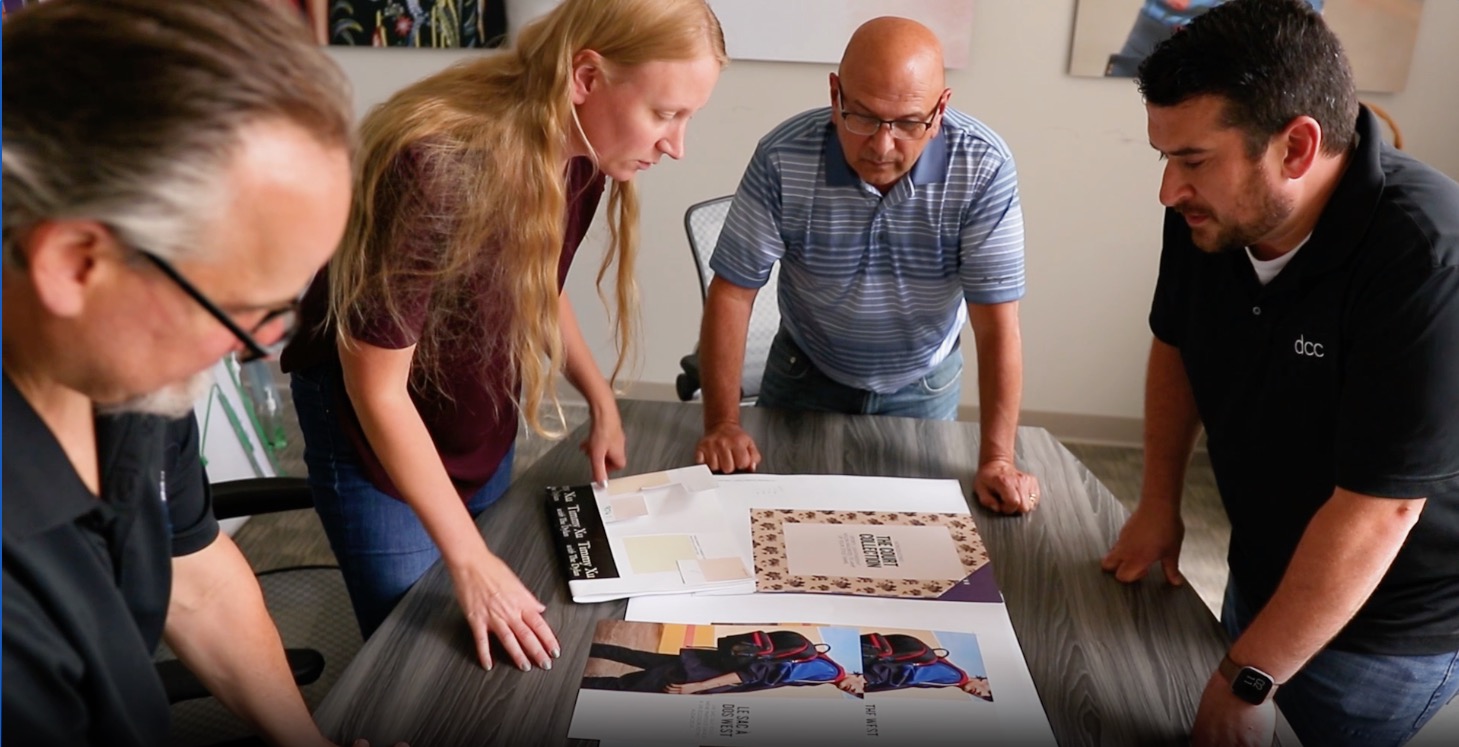
If you’ve ever hosted a professional event, such as a conference, seminar, or trade show, then you know the amount of effort that is poured into the planning process. One of the most important aspects of any successful event is the printed materials you'll need before and during the event. From marketing materials to programs and signage, you need high-quality printing; most likely, you need it done fast and cost-effectively.
Cue the HP Indigo 15K digital press. There’s a good reason this press is dubbed the “Yes Press” because it is the next generation of digital offset print technology. It’s truly a versatile machine that does it all and can do it quickly and cost-effectively. That is why it is the perfect solution for when you need multiple types of media and quick turnaround times.
dcc is proud to be the first printing facility in New Jersey to invest in the new HP Indigo, adding our fourth Indigo press to our fleet and giving us more flexibility to say “yes” to any project. The Indigo 15K can die-cut, add specialty finishes, and can even customize your print pieces. All quickly and cost-effectively. Check out some of the great features of the HP Indigo 15K:
- A thick substrate kit, allowing the press to process up to 24pt media
- Supports variable data
- Did we mention fast turnaround times?!
- Real-time quality control with machine learning.
- Less energy consumption.
It’s time to start planning. You’ve settled on a date and secured a venue and keynote speaker, but what printed items will you need to support your event? An event’s printed materials serve many purposes, from setting the tone for the event to providing crucial information and helping you stay organized.
Here’s a list of must-haves, from small to big, to ensure your event is a success.
Attendee Items
- Invitation – You won’t have a successful event without any guests, so the first step is to invite people to join. Many may opt for digital e-vites to save time and money, but a customized, printed invite can be very impactful and help set the event's tone and theme.
- Flyers – Flyers help you share crucial information, such as announcements or company and speaker bios, about your event and keep attendees in the loop.
- Printed Tickets – Customized event tickets will help keep you organized and track attendees. In this modern, digital age, printed tickets may not be necessary, but they can help to create a professional feel and provide your guests with insight into what to expect.
- Badges for attendees – Name badges not only help your guests network, but they are also one of the first items they receive when they arrive, so they should also set the tone.
- Programs – Programs might be the most essential item for an event because they guide participants, letting them know where they should be and when they should be there.
- Business Cards – One of the purposes of hosting an event is to network and build lasting professional connections. Be prepared to share your information with attendees in a professional way with high-quality business cards.
Large Format Items
- Event Signage – Signage is crucial to any event for many reasons. It helps highlight your brand, create a cohesive look and feel for the event, and provide crucial information to attendees. One of the best ways to accomplish this is with large format, custom-printed banners, posts, and signs.
- Wayfinding/Directional Signage – You want your event to be a seamless and easy experience for your attendees. This is easily accomplished with signage that clearly lets them know where they are and where to go so they don’t miss any of the exciting parts of the day.
- Floor graphics– Floor graphics can really help to build a cohesive brand presence and tie everything together.
Event Giveaways
- Custom Swag – Send your guests home with a custom, branded package to help thank them for attending. This will also serve as a reminder of your brand and your capabilities after the event.
- Ambassador or Speaker Gifts – Custom printed packages for your speakers, ambassadors, and/or influencers will not only thank them for participating but will also provide them with branded material to continue to promote your brand on their channels.
There is a lot to consider when planning an event, and you may be thinking about the impact of all of these printed materials on the environment. Incorporating printed materials into your event may be unavoidable, but that doesn’t mean you can’t do it with sustainability in mind. Here are some tips to help make your print project more environmentally friendly.
- Maximize your paper sheet. Work with your printer to size and format your printed piece most efficiently. Even if it means adjusting the size of your creative to allow more copies to fit on one sheet, also, always print double-sided when you can!
- Avoid plastic. If you need your printed pieces to be durable, cardstock, paperboard, and other heavy-weight materials are always a great choice and can be recycled after use. Try to avoid using lamination or single-use plastics to eliminate waste.
- Choose wisely. Work with a printer that uses sustainable printing practices, such as a Sustainable Green Printing certified facility. An SGP-certified printer will have more sustainable paper and ink options, such as FSC-certified (Forest Stewardship Council®) paper stock and water-based inks. They may also take measures to increase efficiency and reduce consumption and waste.
- Go everGREEN. If your event is recurring, reduce your waste and expenses by creating event signage that can be used year after year by omitting time-sensitive details where you can.
There are many moving parts to consider when planning an event, no matter how large. The convenience of a full-service, one-stop shop to handle all your printing and fulfillment needs can help alleviate some of the stress that event planning brings. That is where dcc, the HP Indigo 15K press, and its large format presses come in! For over 25 years, dcc has delivered high-end, striking images and printed pieces as a fully integrated graphics company specializing in color retouching and printing. And our new Indigo can truly do it all! Let us transform your event concept into whatever form you need, help take your event to the next level, and ensure it’s a success!
Paperboard Packaging: Solutions and Sustainability BACK TO TOP
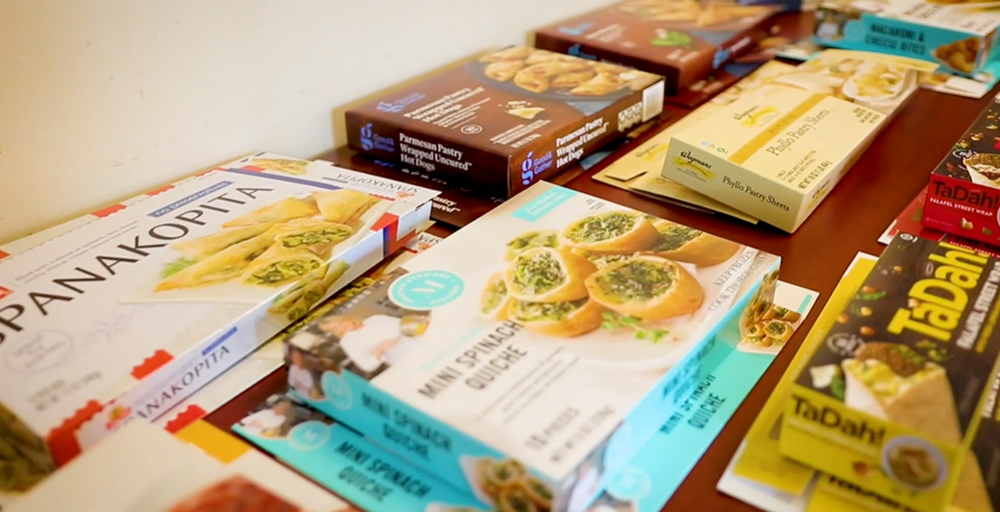
dcc Contributes To the Cause with No Minimum Order Quantities
Print is what we do, and we are known in the print production industry for
our quality, broad capabilities, and customer service. Over the past two
years, we have successfully built upon our strengths by expanding our
folded carton and paperboard packaging division. In a world where there is
a strong concentration on shifting to digital marketing, there is a lot of
debate about the future of print. However, as long as there are
consumables on the market, there will always be a need for packing and
packaging consumer products. Whether on shelves at the grocery store or
shipped directly to consumers, a product's packaging is an integral part of
the consumer experience. Each packaging component is a touchpoint
between a brand and its consumer. Packaging tells a story, is your brand's
first impression, and can speak volumes about your business. Yet, even
though we don’t see a decline in packaging production (in fact, the size of
the packaging printing market is expected to grow 8% over the next 5 years1),
it is not without its challenges.
There is a growing demand for sustainable and compostable packaging
over plastics. Studies show that more than a third of global consumers will
pay more for sustainability, and 61% of consumers in the U.S. consider
sustainability when making a purchase.2 This presents a challenge for
packaging production, as printers must not only source environmentally-
friendly materials but should also consider where and how those materials
are sourced, the carbon footprint associated with them, the cost, the
durability, the functionality, and the printing capabilities of the chosen
medium. As if that wasn’t enough, they also need to maintain compliance
with ever-evolving regulations.
Firstly, we’ll take a look at e-commerce. As the e-commerce industry
continues to grow at a substantial rate, so does the demand for sustainable
and efficient packaging solutions. Tackling these challenges requires a
great deal of innovation and ongoing development. Lisa Pierce, Executive
Editor of Packaging Digest, says, “A sustainably optimized package for
e-commerce groceries is one that is right-sized, can be properly disposed
of in a circular way - meaning recyclable or reusable - and keeps the
product safe and protected through the entire shipping process physically
and thermally.”3
So, what’s the best choice? Paperboard packaging may be the packaging
answer the industry is looking for, as it presents a solution to these
challenges, along with many other benefits:
- Paperboard is made from renewable materials, is recyclable, and
often compostable or biodegradable, making it a great alternative to
plastic and a great solution for the sustainable packaging demand. - Paperboard packaging’s structural versatility allows it to function in
many different ways in order to provide stability. This not only
provides protection for shipping and handling purposes but also
saves on the need for additional costs and materials to help protect
the product. - Paperboard packaging is cost-effective, not only because it is less
expensive to produce than many other materials, but it is also more
lightweight, making it less expensive to ship for e-commerce
businesses. - In terms of your brand’s first impression, you want your packaging to
reflect your brand and provide a unique experience for the consumer. Paperboard packaging can work with a myriad of different printing methods to help create a custom, distinctive experience and tell your brand’s story. - Paperboard is so versatile that it solves almost any design challenge.
It can be used for custom and personalized designs utilizing variable
data, QR codes, embedding LCD video components, and more, and
paperboard can be used for both shipping, direct-to-shelf display
packaging solutions, and even the perfect ambassador or influencer
mailing.
E-commerce and consumer brands should consider the benefits of
paperboard to meet their unique packaging needs and look to packaging
suppliers and producers who use sustainable materials, have a “green”
mission, and are continuously thinking outside the box to come up with
innovative and unique solutions to meet brands’ expectations.
So where does dcc fit into this equation? We are equipped to handle your
paperboard packaging needs without limitations. In this modern digital age,
companies want production to be quicker, cheaper, and more efficient.
Firstly, we offer fast turnaround times at competitive pricing with no
minimum order quantities, so there is little waste. Executive Vice President
at dcc, Cary Battaglia, mentioned, “We hear that larger specialty packaging
printers have large minimum orders that can equate to 200,000+ pieces.
Therefore, if the client only needs 20,000, they pay for the full amount and
then throw out the remainder. dcc is able to support the smaller runs in a
more cost-effective and sustainable manner.” Secondly, we ship worldwide
and work with a number of suppliers who offer sustainable raw materials,
like Neenah Folding Board, available in a range of colors, weights, and
textures and made from premium fibers. Thirdly, we can customize your
design, add variable personalized data, and utilize real-time quality control
with machine learning - all with less energy consumption. And did we
mention fast turnaround times? Here at dcc, we can do it all, from
retouching to printing, fulfillment, and drop-shipping. We are ready to tackle
your challenging packaging project in its entirety!
Contact us at info@dccnyc.com for a quote or a plant tour.
"Can I just say thanks for all the support you provide to my team? Our one-off, oddball, need it now, etc. requests that come to you every day - your professional, timely, and accurate responses are appreciated more than you know."
Phyllis D., dcc Client
Contact us today about your next packaging project!
1 https://www.mordorintelligence.com/industry-reports/packaging-printing-market
2 https://meyers.com/meyers-blog/sustainable-brand-packaging-statistics-why-eco-friendly-packaging-matters/#:~:text=A%20study%20shows%20that%2054,the%20charge%20in%20this%20trend
3 https://www.packagingdigest.com/ecommercesupply-chain/winning-packaging-ecommerce-grocery?ADTRK=InformaMarkets&utm_source=eloqua&utm_medium=email&utm_campaign=15_NL_PKGD_News%20%26%20Insights_Edit_Sub_20230601&sp_cid=15204&utm_content=15_NL_PKGD_News%20%26%20Insights_Edit_Sub_20230601&sp_aid=28305&sp_rid=19665846&sp_eh=0fbffb61f6c786123e3b6185fd39137ed3c64af18e6485a712c3ca17d1c03722
Printing for the Luxury Industry BACK TO TOP

dcc has had the privilege of working with some of the most respected high-end luxury brands in the world. They come to us to bring their creative visions to life because we hold ourselves to the highest standards possible when it comes to print production and customer service. The tactility of print is a natural fit for the luxury and fashion industry which relies on high-quality printing techniques to help brands maintain their high-end image, but this comes with many unique challenges. With the right expertise and equipment, these challenges can be overcome to produce high-quality, premium printed materials that drive marketing goals forward.
Let’s take a look at some of the challenges that luxury brands face when it comes to print.
Brand image. Luxury brands often rely on high-quality printing techniques to maintain their premium image. Any printing mistakes or flaws can be detrimental to the brand's reputation.
Consistency. Luxury brands often have a distinct look and feel that must be consistent across all print materials, including packaging, brochures, and advertisements. Achieving this consistency across multiple mediums and print techniques can be challenging.
Unique Materials. Luxury brands often rely on high-end, unique materials, such as vinyl, plexiglass, and specialty papers, such as synthetic stocks, to maintain a premium look and feel. These materials require specialized printing techniques and equipment to produce high-quality results.
Limited print runs. Luxury often means exclusive and brands may produce limited editions or small batches of their products. Smaller print runs can be more challenging and expensive.
Security. Many luxury brands use special printing techniques and security features to prevent counterfeiting. These features can be complex and require specialized equipment and expertise to produce.
With the right expertise and equipment, dcc has overcome these challenges and made its mark within the industry. Our Vice President of Sales, Jeff Bogart answers some questions about how dcc overcomes some of the challenges and how the power of aligning print partnerships helps to elevate luxury brands and achieve a higher ROI.
Q: How long has dcc been supporting luxury brands and how did you get your entrée into the vertical?
A: Since our humble beginnings we have been working with high-end fashion and luxury brands.
Q: Brand image is paramount to luxury clients. How do you marry high-quality retouching with printing techniques to achieve the best end product?
A: The ability to reproduce an image across many mediums is critical to the success of any high-end brand. It’s not easy to do but through our device profiling and constant calibration of our output devices, we make it simple to keep your image looking consistent over many different substrates.
Q: Color consistency is key and is difficult to achieve when you are printing on many substrates including paper, board, vinyl, and more. What technologies and/or processes does dcc have in place to ensure consistency?
A: Not only are we Gracol certified but we have many different output devices under 1 “roof” that are all calibrated. We have a fashion client that utilizes all of our capabilities. We started out with a camera raw image that is retouched and color corrected. From there the image was used for an in-store sign, a backlit cash wrap, a fabric hanging banner, and a printed handout.
Q: When it comes to ink on paper, jewelry, and precious metals are very difficult to reproduce accurately. What are your tips?
A: The key to reproducing jewelry is that we need a good starting point from what the photographer captures. They need to be able to capture as much detail as possible so that we can reproduce the jewelry in the best way possible. Our retouchers have extensive experience in setting up the proper balance needed to accurately reproduce the jewelry. Because we are printing with a 300-line screen, hybrid dot we are able to hold that important detail of the jewelry on press.
Q: What are some of the industry challenges that luxury brands are facing and how do you solve them?
A: Luxury and retail are about speed to market with the latest fashion trends. We are set up to support a brand's marketing efforts as we are nimble and quick to produce marketing materials that can support marketing programs.
Q: With ambassadors and influencers playing a key role in marketing measures and consumers valuing limited-edition products, small print runs can be challenging and expensive. What capabilities does dcc have that support their client’s needs?
A: Digital printing is a cost-effective medium for limited-edition marketing. Using variable data we are able to personalize the experience of the marketing material. This has become a popular tool for smaller campaigns.
Q: Staffing is an ongoing challenge across every industry and employees/print buyers are being asked to do more. How does dcc’s longevity and craftsmanship help to solve this issue?
A: The majority of our team has been with us for many years. We understand print but more importantly, we understand how to service our client base and exceed their expectations. These days everyone has to do more and wear many different hats. We are always happy to jump in and take some of those additional tasks off our clients' plates.
Q: According to a trending article from Luxe Digital on February 22, 2023, Sustainable Luxury: Millennials Buy Into Socially Conscious Brands, “Millennials and Generation Z consumers are driving 85 percent of global luxury sales growth, their expectation for luxury brands to be aligned with their values becomes increasingly important. … A study from Nielsen showed that 73 percent of Millennial respondents were willing to spend more on a product if it comes from a sustainable or socially conscious brand.” What does dcc do to support the sustainability efforts of its luxury clients?
A: Sustainability is an important part of what we do every day at dcc. Reducing our carbon footprint has been a priority. All of our waste that is generated is recycled, reused, or turned into electrical energy. Our 675 rooftop solar panels generate clean renewable power. We are also an SGP and FSC-certified supplier.
Q: What is the most challenging project that you have worked on for a luxe client and how did you solve the problem?
A: Every now and then a project comes up where we really get to showcase all of our skills and talents. When we have a challenge our teams get excited and really like to step up to make it happen. Recently we were tasked to create a one-off fabric swatch presentation for a very special VIP that happens to reside in Washington D.C. Our large format and digital group rose to the challenge to help make this special project happen.
Q: Relationships and customer service. Why do luxe brands choose dcc?
A: Many of our clients have been with us for many years and there’s a reason for that. We understand the relationship and trust that many of our clients put in us, day in and day out. Our goal is always to deliver what we promise each and every time. That’s what sets us apart.
Interested in learning more about dcc’s capabilities or obtaining a quote? Reach out to sales@dccnyc.com.
2014
2013
2020
WWD and Between 5th & 6th BACK TO TOP
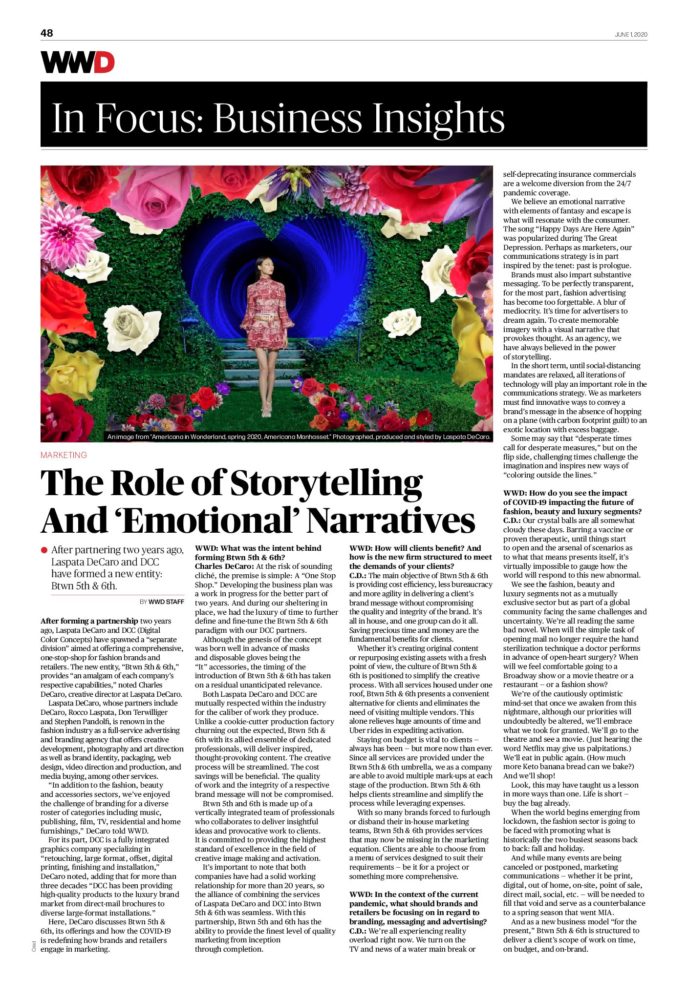
2012
dcc Invents Custom Online Ordering System BACK TO TOP
dcc Installs DURST Rho 500r BACK TO TOP
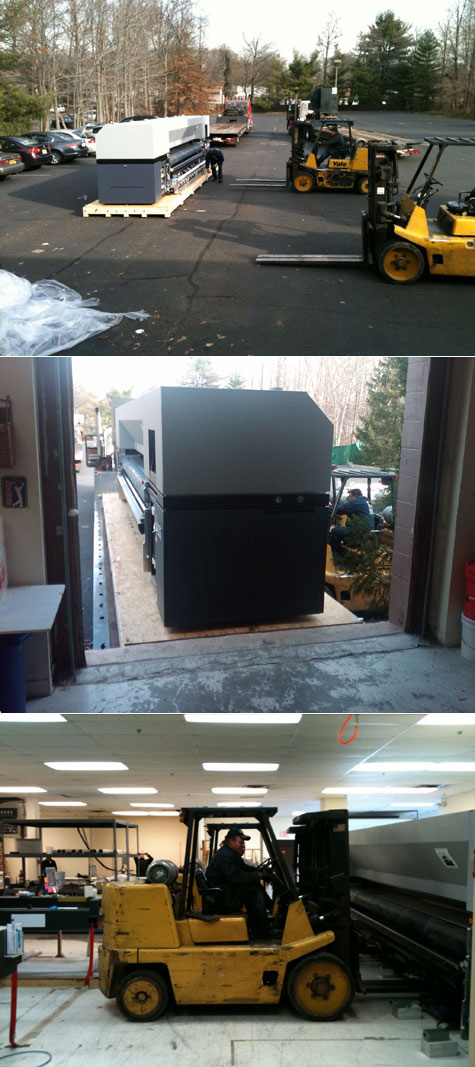
2015
IP Video BACK TO TOP
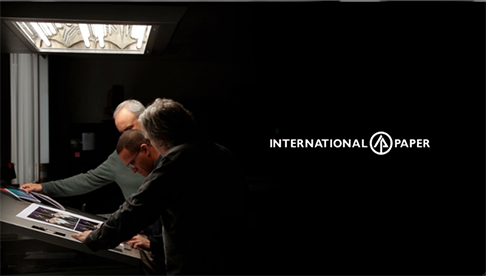
2011
dcc Launches Third Issue of Custom Print Publication BACK TO TOP
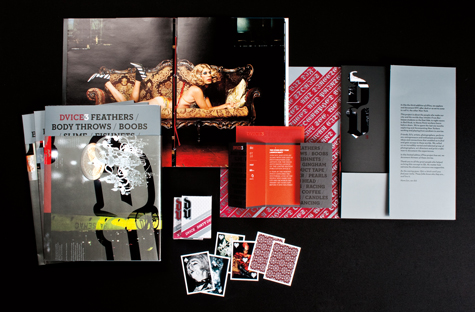
AWARD "DV 3" Winning Entry for FPO 2011 BACK TO TOP




















